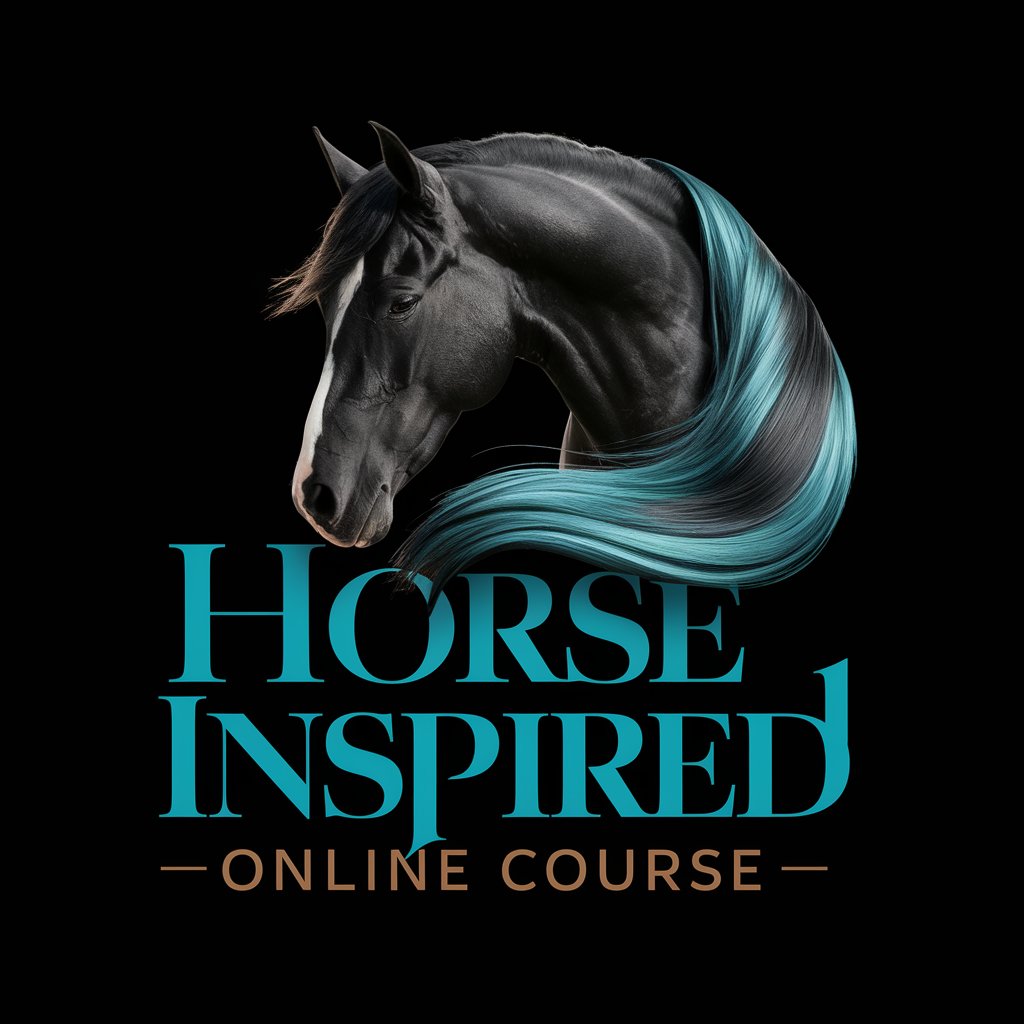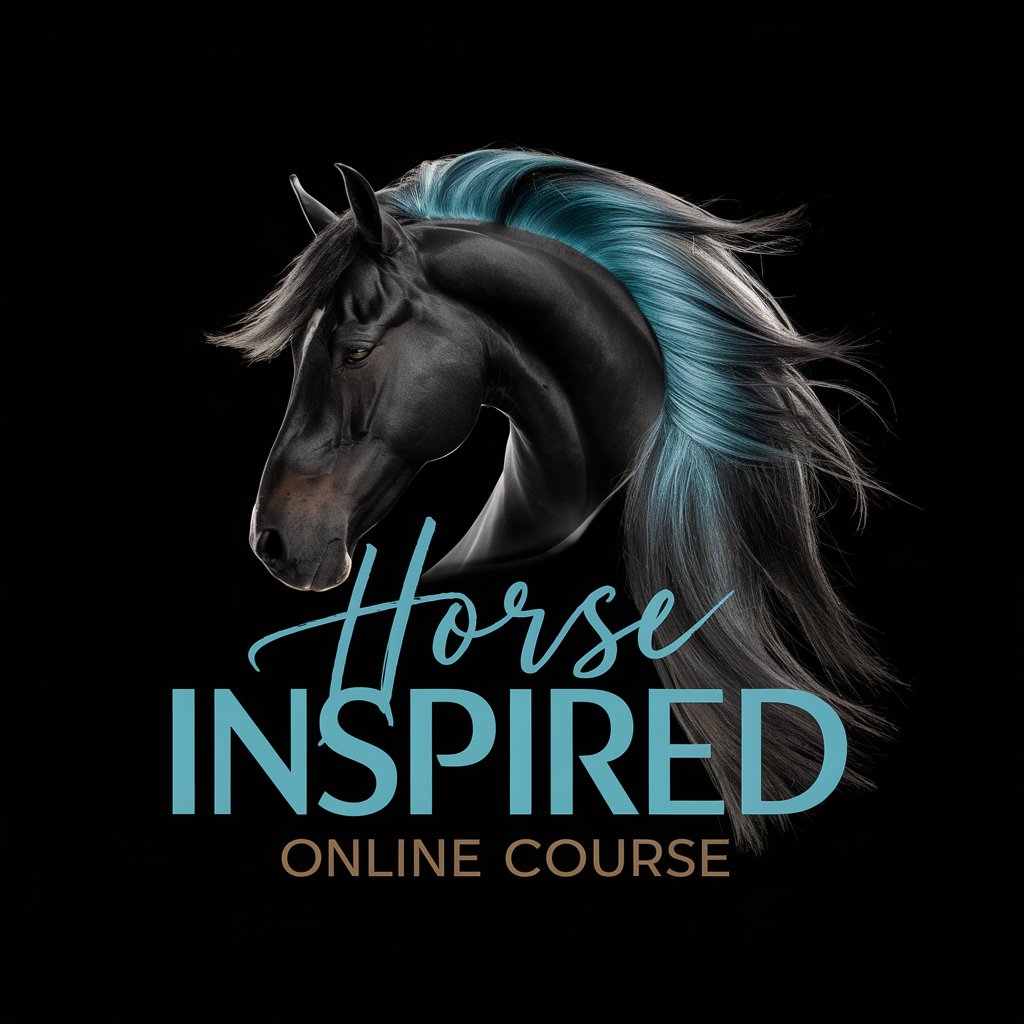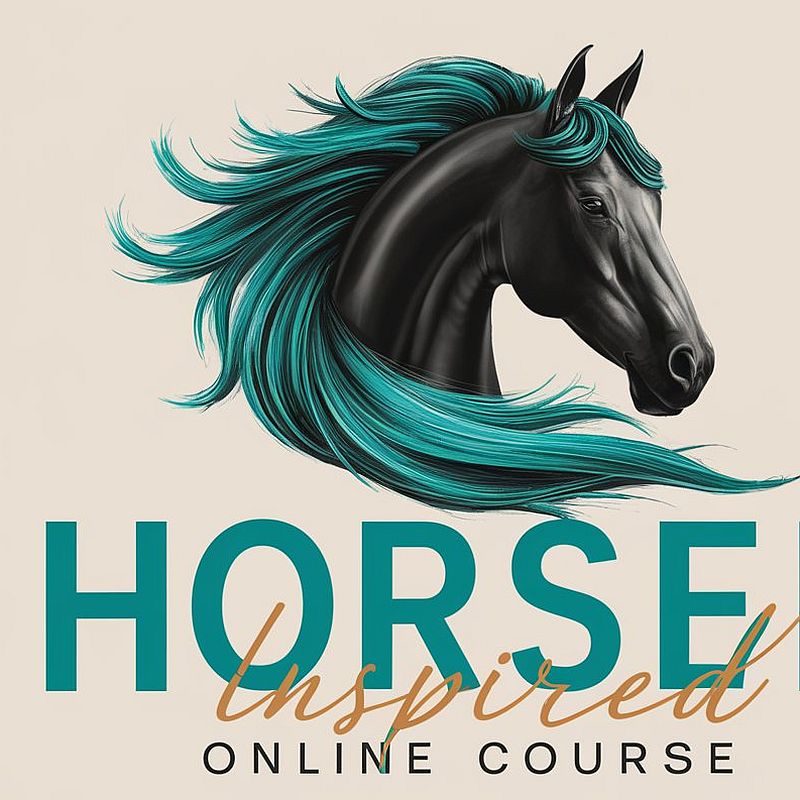©Dr Margaretha Montagu
Introduction: A Love Affair in Black
The first time I locked eyes with a Friesian, I knew I was in trouble. There’s something about the way they arch their necks, as if perpetually posing for a Baroque painter, that makes you forget rational thoughts—like the fact that I had no business adopting a 1,500-pound diva with a shoe addiction (more on those feathered feet later). My introduction to the breed was through Belle – or Beitske van’t Slijt, to give her her full name – a mare whose idea of “personal space” involved nuzzling my pockets for mints while simultaneously judging my life choices. Friesians don’t just enter your life; they stage a coup, draping your world in jet-black glamour and enough hair products to bankrupt a salon.
Owning a Friesian is like adopting a Renaissance Faire performer—dramatic, loyal, and convinced they belong in an oil painting. They’re the equine equivalent of a Shakespearean actor: prone to soliloquies (translation: whinnies that shake the rafters) and deeply committed to their aesthetic. This article is my love letter to these “black pearls” of the horse world, blending history, science, and the occasional faceplant into a mud puddle. Let’s unravel why Friesians aren’t just horses—they’re a lifestyle.
1: History and Origins—From Warhorses to Fairy Tales
Medieval Roots: Knights, Nobility, and Netflix-Worthy Drama
Long before Instagram influencers discovered their photogenic flair, Friesians were the ultimate medieval flex. Originating in Friesland, a windswept Dutch province, they carried knights into battle as armoured destriers—think of them as the Rolls Royce of the 13th century: sleek, powerful, and expensive. Chroniclers gushed over their “floating trot,” though I suspect the real appeal was their ability to intimidate enemies while looking fabulous in chainmail.
Near Extinction: The 19th-Century “Oops” Moment
By the 1800s, Friesians faced a crisis more dire than a bad haircut. As agriculture industrialised, farmers raised bulkier draft breeds, and Friesians fell out of favour. Crossbreeding diluted their bloodlines, reducing their population to a perilous handful. By 1913, only three stallions remained in the Dutch registry. Enter a band of stubborn enthusiasts (bless their Dutch hearts), who rebooted the breed like a Netflix revival—trimming the melodrama and doubling down on those luscious locks.
Pop Culture Ascension: Unicorns Without the Horn
Today, Friesians are the darlings of Hollywood’s fantasy genre. They’ve galloped through Ladyhawke, Eragon, and The Mask of Zorro, their manes billowing like they’re in a Beyoncé video. Directors adore their “unicorn aura,” though any owner will tell you they’re more like divas with a hay addiction. (“No, Belle, you can’t eat the film crew’s cables.”) From medieval battlefields to TikTok fame, Friesians have mastered the art of reinvention—proof that you can be both ancient and trendy.
2: Anatomy of a Living Legend—Black Magic and Biohacks
The Friesian “Look”: Born to Be Instagrammed
A Friesian’s beauty is a high-maintenance relationship. Their jet-black coat (save for the rare “chestnut rebel”) gleams like obsidian, while their mane cascades in a shampoo-commercial waterfall. Then there are the feathers—those silky leg tassels that demand daily brushing and a prayer circle to avoid mud clumps. Pro tip: Invest in a leaf blower. Trust me.
Conformation: Baroque vs. Sport Horse
Friesians come in two flavours: baroque (think Rubens painting—compact, muscular, with a neck arched for royalty) and sport horse (leaner, taller, bred for modern dressage). Purists debate which is “true” to the breed, but let’s be real: Both types trot like they’re auditioning for Swan Lake.
Health & Genetics: The Price of Perfection
Behind the glamour lurk genetic gremlins. Dwarfism (Friesian Hydrocephalus Syndrome) and megaesophagus (a swallowing disorder) are rare but heartbreaking. Then there’s DSLD, a connective tissue issue that’s the equine version of “my knees hurt when it rains.” Responsible breeders now use DNA testing to sidestep these pitfalls, because nothing kills the mood faster than a vet bill.
Movement: Trotting on Air (With Attitude)
Their famous “floating trot” is less “ethereal ballet” and more “I’m late for my spa appointment.” It’s a gait so buoyant, you’ll forget they weigh as much as a small car—until they step on your foot.
“Friesians are proof that evolution has a sense of humour: They’ve perfected looking majestic while tripping over a twig.” – Dr M Montagu
Next Up: Dive into their Personality—Gentle Giants with Opinions (spoiler: they’re basically 1,500-pound toddlers with better hair).
3: Personality—Gentle Giants with Opinions
If Friesian horses had a dating profile, it would read: “Loyal, sensitive, and emotionally complex. Loves long walks through lush pastures, dramatic entrances, and holding grudges over missed cookie deliveries.” These horses are the ultimate contradiction—gentle enough for a novice rider yet stubborn enough to make a seasoned trainer question their life choices.
Take my mare, Tooske, for example. One summer, she decided the barn’s new wheelbarrow was a portal to hell. For weeks, she’d snort, spin, and side-eye it like it owed her money. Yet, when a thunderstorm ripped through the farm, she stood rock-solid at the paddock gate, herding the panicked minis to safety like a fuzzy black bodyguard. Friesians don’t just have personality—they weaponise it.
The Velcro Horse Syndrome
Friesian horses bond like they’re auditioning for a rom-com. They’ll follow you around the pasture, nuzzle your hair while you muck stalls, and stare soulfully into your eyes as if to say, “You’re my human now.” My gelding, Kash, once busted out of his stall (despite a triple-locked door) just to nap outside my bedroom window. When I asked my vet about this clinginess, she deadpanned, “Congrats, you’ve adopted a 1,500-pound golden retriever.”
Drama Queens with Diplomas
Their intelligence is both a blessing and a curse. Teach a Friesian to open a gate? They’ll master it in minutes. Ask them to walk past a “scary” plastic bag? Cue the Oscar-worthy spook-and-spin routine. They’re perceptive enough to sense your mood (showing up for cuddles after a bad day) but will also test boundaries like a toddler negotiating extra screen time. Pro tip: Always carry treats. Bribery is not beneath them—or you.
The Zen of Stubbornness
Training a Friesian requires the patience of a monk and the negotiation skills of a UN diplomat. They won’t bulldoze through challenges like a Thoroughbred; they’ll pause, ponder, and decide if your request aligns with their agenda. My favourite lesson? “Forward” is a suggestion, not a command. Once, during a dressage test, my friend’s Friesian horse halted mid-trot to gaze at a butterfly, as if to say, “Your ‘score’ means nothing to me, Karen.”
Wise Insight: “Friesians don’t need dominance—they need partnership. Respect their opinions, and they’ll move mountains for you. Disregard them, and you’ll learn the true meaning of ‘horseback strike.’”
4: Versatility—Not Just a Pretty Mane
Friesians are the Swiss Army knives of the horse world—if Swiss Army knives sparkled, trotted in slow motion, and required daily detangler. Historically, they’ve been warhorses, farmhands, and carriage royalty. Today? They’re out there proving they’re more than just a photogenic mane.
Dressage: Where Drama Meets Discipline
In the dressage arena, Friesian horses are poetry in motion. Their natural collection and uphill build make them naturals for haute école movements, though they’ll occasionally add flair—like an unsolicited levade during a simple halt. (“You said ‘impress the judge,’ right?”) My only foray into competitive dressage ended with my gelding inventing a new move: the “spook-piaffe,” a thrilling combo of precision and panic.
Driving: The Ultimate Flex
Nothing shouts “I’ve arrived” like a Friesian-drawn carriage. Their power and presence make them stars in combined driving, though their idea of “steering” can be… creative. Once, during a Halloween drive, a Friesian team decided a roadside scarecrow was a mortal threat. We spent 20 minutes circling it while they snorted triumphantly. (Note: Friesians hold grudges against inanimate objects.)
Trails, Ranches, and Jumping (Oh My!)
Yes, Friesians can jump—though purists clutch their pearls at the idea. Their heavy build isn’t built for grand prix courses, but they’ll hop a log or crossrail with gusto, feathers flapping like victory flags. Trail riding? They’ll march through rivers, ignore rogue squirrels, and still manage to look regal with burrs in their tail.
Pop Culture’s Favourite Steed
Directors adore Friesian horses for their otherworldly vibe, but filming them isn’t all glamour. Trainers joke that the hardest part isn’t teaching them to charge into battle—it’s convincing them not to mug for the camera mid-scene. (“Belle, this is a medieval war, not a shampoo commercial.”)
“Friesians are the only breed that can make mucking out a stall look like a Renaissance painting. Even their chaos is art.” Dr M Montagu
5: Caring for Friesian Horses—Glitter, Grooming, and Gravity
Owning a Friesian is like adopting a supermodel with a dirt fetish. Their beauty is high-maintenance, their diet is finicky, and their idea of “self-care” involves rolling in the mud five minutes after a three-hour grooming session.
Feathers: The Ultimate Test of Patience
Those silky leg tassels? They’re mud magnets. In winter, they’ll cake into what I call “Friesian snow boots”—solid dirt cylinders that require chiselling. My grooming kit includes a horse vacuum, a blow-dryer, and lots of prayer. (Also, accept that you’ll find glitter… everywhere. Forever.)
Diet: The Gourmet Hay Connoisseur
Friesians are “easy keepers,” meaning they’ll get fat on air and passive aggression. Mine once ballooned after stealing a mouthful of the mini’s grain. Their metabolism is a tightrope: too much alfalfa and they’re auditioning for My 600-Lb Life; too little and they’re unmanageable hangry divas. Weigh hay, measure portions, and hide the cookies—unless you want a horse who’s mastered the art of guilt-tripping.
The Escape Artist Chronicles
Friesian horses are equine Houdinis (much like Falabellas). Latches, gates, and bungee cords are mere irritations. My trio once staged a jailbreak to raid the feed room, leaving a trail of hoofprints and shame. Now, I use combination locks… and sleep with one eye open.
“Budget for two things: unexpected vet bills and industrial-sized conditioner. You’ll need both.” Dr M Montagu
Next Up: The Friesian community—where Dutch tradition collides with Texan rodeo spirit, and stallion inspections get spicy. Spoiler: It’s Real Housewives meets Black Beauty.
6: The Friesian Community—Passion, Pageantry, and Politics
If you think horse people are intense, meet Friesian horse people—a global cult of black-clad enthusiasts who’ll debate feather length like it’s a constitutional amendment. The breed’s heartbeat is the KFPS (Koninklijke “Friesch Paarden-Stamboek” Vereniging), the Dutch registry that’s equal parts guardian, gatekeeper, and grandmaster of horse drama. Their annual inspections are part beauty pageant, part SAT exam, where horses are scored on movement, conformation, and “star quality.”
Stallion Showdowns: Ego, Elegance, and Side-Eye
Stallion inspections are the Friesian world’s answer to The Bachelor. Hundreds gather to watch unproven studs trot, prance, and occasionally humiliate themselves (see: 2019’s “pee-in-the-ring” incident). Approved stallions earn breeding rights and instant celebrity status—think Beyoncé with mane AND tail. The rejected? They slink home to a life of never-ending leisure, which, honestly, sounds pretty great.
Global Tribes: From Dutch Purists to Texas Trail Queens
The Friesian horse diaspora is wild. In the Netherlands, traditionalists pair them with wooden shoes and carriage rallies. In Texas, they’re roping cattle in blinged-out tack. Facebook groups teem with heated debates: “Baroque vs. Sport lines!” “Feathers: Trim or let flow?” Meanwhile, my Friesians are just trying to steal tomatoes from the neighbour’s potager.
Controversies: When Beauty Has a Cost
The breed’s resurgence brought growing pains. Overbreeding for colour (jet-black only, please!) led to genetic bottlenecks. Some lines prioritise mane volume over soundness, resulting in horses that look like My Little Pony villains but move like creaky drawbridges. Responsible breeders push for DNA testing and diversity, but as one vet muttered, “You can’t fix vanity with a spreadsheet.”
7: The Joys and Jitters of Ownership
Owning a Friesian is like dating a rockstar: thrilling, expensive, and occasionally humiliating. Take the time my mare, Belle, decided to “help” me fix a fence. She carried posts in her teeth like a DIY enthusiast… then dropped them on my foot. Worth it? Absolutely.
Pros: They’ll Steal Your Heart (and Your Sweatshirt)
Friesians bond like they’re starring in a Hallmark movie. They’ll remember your voice, nuzzle away tears, and stand sentry during your midday nap. My gelding once blocked a stray dog from charging me, planting himself like a furry linebacker. They’re also absurdly versatile—dressage one day, trail-riding photobombs the next.
Cons: Your Wallet Will Weep
Let’s talk money. Friesians require custom-sized everything—tack, blankets, therapy bills. Their feathered legs demand daily brushing, which means buying conditioner by the gallon. Then there’s the “Friesian tax”: vets charge extra because, as mine joked, “Your horse’s eyelashes are thicker than my chequebook.”
Escape Artists with PhDs
These horses could break out of Fort Knox. Mine once undid a bolt latch, freed the entire barn, and led a midnight parade to the hayloft. Security cameras revealed her smug trot, mane billowing like she’d just pulled off Ocean’s Eleven. Now I use padlocks… and a GPS tracker.
Is a Friesian Right for You?
Only if:
- You think “grooming” counts as cardio.
- Your idea of fun is genetic research.
- You’re okay with your horse being smarter than you.
“Buy a Friesian if you want a soulmate. Lease one first if you value sleep.” Dr M Montagu
8: The Future of Friesian Horses—Preservation and Progress
The breed stands at a crossroads: cling to tradition or adapt to survive. Purists want Friesians frozen in a 17th-century painting; progressives argue they’ll go the way of the dodo without fresh blood.
Genetic Gambles: Science to the Rescue
DNA testing now screens for dwarfism, megaesophagus, and DSLD. Breeders are whispering about outcrossing (gasp!) to strengthen joints. One maverick in Oregon even blended Friesians with Iberians, creating “Friesians del Sol”—controversial, but stunning.
New Roles: Therapy Horses and TikTok Stars
Friesians are moonlighting as emotional support animals. Their calm demeanour soothes veterans and kids alike—though my mare still side-eyes anyone who doesn’t compliment her mane. Meanwhile, Gen Z riders are turning them into influencers, filming #FriesianFridays prances set to Lizzo.
Ethical Advocacy: Breeding with Brain Cells
The mantra? “Quality over quantity.” Rescues overflow with poorly bred Friesians who can’t trot without wobbling. Responsible owners now demand transparency: pedigrees, health clearances, and a vow to never, ever use the term “rare chestnut Friesian” (they’re just poorly dyed).
9. Conclusion: Why Friesians Steal Hearts
I’ll never forget the day Belle colicked. As the vet worked, she rested her head in my lap, breathing shallow puffs of trust. Hours later, crisis averted, she stole my hat and trotted off, flipping it like a frisbee. That’s the Friesian paradox: fragile yet fierce, regal yet ridiculous.
They’re more than horses—they’re confidants who’ve seen you cry over spilt grain, comedians who’ve moonwalked out of trailers, and artists who turn pasture mud into abstract masterpieces. Owning one is a crash course in humility, humour, and how to braid hair at 6 a.m.
In a world obsessed with speed and simplicity, Friesians remind us to slow down, swish our feathers, and gallop through life like we’re being filmed in slow-mo. As I write this, Kash is outside, dunking his entire face in the water trough—because why drink elegantly when you can make a splash?
Final Line: “Friesians don’t just leave hoofprints on your farm. They etch themselves into your soul—usually while tracking mud through it.” Dr M Montagu
Mic drop. Manes flip. 🖤
Friesian Horse Frequently Asked Questions (FAQ)
1. What are the distinctive characteristics of a Friesian horse?
Friesian horses are known for their striking black coat, luxurious mane and tail, and powerful build. They typically stand between 15.3 and 17 hands high (about 63-68 inches at the withers). Their most distinctive features include feathering on the lower legs, a thick arched neck, and a proud, high-stepping gait. Friesians are also known for their gentle temperament despite their impressive size.
2. What is the history and origin of the Friesian breed?
Friesians originated in Friesland, a province in the northern Netherlands. Their history dates back to the Middle Ages when they were used as war horses by knights due to their strength and agility. Later, they became popular as carriage horses and for farm work. The breed nearly went extinct several times, most seriously in the early 20th century, but dedicated breeding programs helped restore their numbers.
3. What health issues are Friesians prone to?
Friesians are known to have several breed-specific health concerns, including:
- Aortic rupture (a cardiovascular condition)
- Megaesophagus (an enlargement of the oesophagus)
- Retained placenta in mares
- Insect bite hypersensitivity
- Dwarfism
- Hydrocephalus
- Osteochondrosis (a joint disorder). These horses also tend to have a shorter lifespan compared to some other breeds, with an average of 16-17 years.
4. How much does a Friesian horse cost?
The price of a Friesian horse varies widely based on age, training, bloodlines, and confirmation. On average, prices range from $7,000 to $30,000 for a registered Friesian. Elite show horses or breeding stallions with exceptional pedigrees can cost $50,000 to $100,000 or more. Young horses and those with less desirable traits may be on the lower end of the price spectrum.
5. What activities and disciplines are Friesians best suited for?
Despite their size, Friesians are quite versatile. They excel in:
- Dressage
- Driving/carriage work
- Exhibition and circus performances
- Pleasure riding
- Equine-assisted coaching
- Film and television appearances. Their striking appearance and trainable nature make them popular for both competitive disciplines and recreational riding.
6. What are the grooming requirements for a Friesian horse?
Friesians require extensive grooming due to their abundant hair. Regular care includes:
- Daily brushing of the mane and tail to prevent tangles
- Regular washing and conditioning of the feathering on legs
- Thorough drying after bathing to prevent skin issues
- Special attention to the thick mane to prevent rubbing and breakage
- Regular trimming of feathers if not being shown with full feathering. Many owners braid the mane and tail when not showing to prevent tangling and breakage.
7. What is the temperament of a typical Friesian horse?
Friesians are known for their willing, gentle temperament. They tend to be intelligent, eager to please, and highly trainable. Despite their imposing size, they’re generally not flighty or spooky. Their calm, sensible nature combined with natural showmanship makes them excellent partners for riders of various experience levels, though their size and energy may be challenging for complete beginners.
8. How can I tell if a Friesian is purebred, and what are the registration requirements?
Purebred Friesians are registered through the Friesian Horse Association of North America (FHANA) in the US or the Royal Friesian Horse Studbook (KFPS) in the Netherlands. A purebred Friesian will have:
- A solid black coat (though very small white markings may be permitted)
- No crossbreeding in their lineage
- Correct conformation according to breed standards
- DNA verification of parentage. Registration requirements include inspection of the horse for conformity to breed standards, DNA testing, and documented lineage tracing back to registered Friesian ancestors.
9. What are the exercise and space requirements for keeping a Friesian?
Friesians are energetic horses that need regular exercise to maintain health and prevent behavioural issues. Recommended requirements include:
- Daily turnout in a paddock or pasture (at least 1 acre per horse is ideal)
- Regular riding or driving at least 3-5 times per week
- Access to shelter from extreme weather
- A stall size of at least 12’x12′ if kept indoors part-time
- Mental stimulation and varied activities to prevent boredom. Despite their size, properly trained Friesians can be quite manageable in appropriate facilities.
10. What’s the difference between a Baroque Friesian and a Modern Friesian?
Baroque Friesians represent the more traditional, heavier type of the breed with:
- More substantial bone structure
- Greater feathering on the legs
- More pronounced crested neck
- Broader chest and shorter legs
Modern Friesians have been selectively bred to be more refined for sport horse disciplines with:
- Longer legs
- More rectangular body shape
- More uphill build
- Greater athleticism for dressage
- Slightly less feathering and mane
Both types are recognised within the breed, though some purists prefer the more traditional Baroque style that closely resembles the historical Friesian horse.

Write Your Way to Serenity: A Guided Journaling Retreat Inspired by Horses for anyone interested in increasing their emotional, physical and social resilience by starting a journal, but does not have much time to invest and is looking for a simple, low-cost, easy-to-implement strategy that gives tangible and lasting results. Get immediate access

The Compassionate Insight-giving Guide to Getting Over the Loss of Your Horse – an Online Course – find support, guidance, and practical tools to navigate the complex emotions and challenges associated with the loss of a heart horse. Get immediate access

The Harness the Healing Power of Your Horses – Become a Mindfulness Meditation Teacher and Create Substantial and Sustainable Income with Your Horses- an Online Teacher Training and Create a Closer Connection to Your Horse Get immediate access

“I am an experienced medical doctor – MBChB, MRCGP, NLP master pract cert, Transformational Life Coach (dip.) Life Story Coach (cert.) Stress Counselling (cert.) Med Hypnotherapy (dip.) and EAGALA (cert.) I may have an impressive number of letters after my name, and more than three decades of professional experience, but what qualifies me to excel at what I do is my intuitive understanding of my clients’ difficulties and my extensive personal experience of managing major life changes using strategies I developed over many years.” Dr M Montagu

